Jimmy Tamborello Makes Beautiful Techno
Santa Barbara’s Soft-Spoken Son Heads Out with The Postal Service
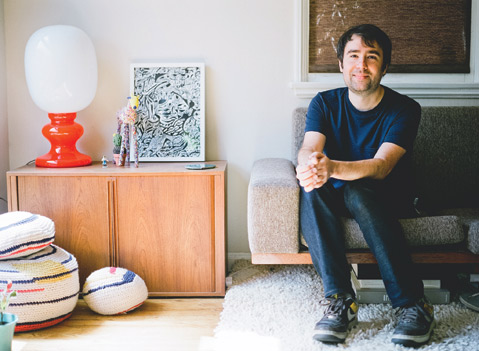
For three decades now, pop music’s muse has hung out at San Marcos High. In the 1980s, she anointed the jangly Toad the Wet Sprocket boys; the ’90s saw her favoring Parry Gripp’s punk-flavored Nerfherder. This year, the Royals’ serial blessing falls on a surprisingly soft-spoken alum who in April played the preeminent stage of this generation’s rock dreams: headlining the Coachella Valley Music & Arts Festival’s Main Stage as part of The Postal Service. In a way, he’s part of a nostalgia act. After all, aside from a couple of previously unreleased tracks, the band hasn’t released new material in 10 years; their current tour is in support of the reissue of their lone studio output, Give Up, which in 2004 became the Sub Pop label’s second-best-selling album of all time. It also spawned a hit, a spot on Garden State’s ubiquitous movie soundtrack, and scads of covers by other troubadours and bands.
In another way, though, it’s a most ripe moment for The Postal Service to revisit fame. Essentially a side project for three acclaimed artists, the band’s reputation has only grown in its silent years. Besides headlining Coachella and Lollapalooza in Chicago, this year’s whistle stops include Red Rocks in Colorado and the Greek Theater in Berkeley. They play the Santa Barbara Bowl this Saturday, July 20. In semi-retirement, The Postal Service became a sum bigger than its glowing parts, which famously include Ben Gibbard, star vocalist of pop phenom Death Cab for Cutie; Jenny Lewis, the alt-country heroine who fronted Rilo Kiley; and, last but not least, Jimmy Tamborello, an electronic-pop-music pioneer who some critics claim changed the face of indie rock with his seminal (and now ancient) album, Life Is Full of Possibilities, under the name Dntel. He’s also a guy (San Marcos Class of ’92) from a real nice family straight outta Goleta, California.
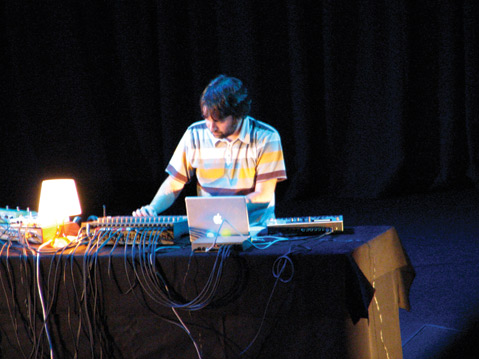
“It’s nerve-wracking,” Tamborello admitted earlier this year, imagining himself onstage at Coachella over lunch somewhere between Glendale and Griffith Park. “On our last tour, we played little 200-people places,” he recalled. Coachella audiences number in the tens of thousands. Though he’s lived in Los Angeles since leaving S.B. for college in the late 1990s, and though he moves through the rock world with seeming ease, Tamborello doesn’t come off at all the stage-strutting rocker. Rather, his low-key, circumspect manners seem more suited to studious pursuits, and, like most working musicians, he spends a lot of time alone. He isn’t escaped from a lone and filthy garret, though. He shares a house with his girlfriend, who works as a production manager in Hollywood. “I used to be a night owl, but more and more, I’ve been writing music during the day,” he explained. “She comes home in the evening, and I like to be finished working when she does — unless I’m really involved in something.” Tamborello’s kinda day job is both solitary and public; he hosts a weekly Internet radio show on dublab (a nonprofit collective hyping itself as “future roots radio”), where he spins techno on a program he calls Dying Sounds. In one email, he said he didn’t much enjoy performing his solo act, Dntel, in front of a crowd because he doesn’t enjoy “playing” a laptop. However, he admits to loving it when the audience is present and engaged, as they often are during occasional shows at the Los Angeles techno-haven Low End Theory in Lincoln Heights.
The first Postal Service tours were hard for him — even Gibbard had to invent new kinds of dances and learn to perform without a guitar — but they always ended well. “They were playful, and the crowds were great, even if we hit a bad note. This time around, we have monitors, and I even have a back-up computer if mine crashes. Sometimes I feel bad that I’m not dancing. But it will be fun,” he said. “It won’t be as intimate as the last tour, but it will be fun.” It seems guys who play computers in a band, even bands that helped bridge the gap between emo singing and skittery computer sounds, don’t get the same attention that drummers and guitarists draw. “I’ll be a rock star for a few months, and then back to my real world,” laughed Tamborello.
Family Values
When I first met Jimmy Tamborello in the late 1980s, he was 11 years old and the best cartoonist I knew. He hung out at Andromeda Books, a comic store in the Calle Real Shopping Center. Jimmy and his brother, Brian (who eventually became the drummer in the band Psychic Ills and who now creates the fashion line Les Aperizes with Laurence Nguyen), were favorite customers because, unlike most of the venal little geeky monsters who always wanted to know how much the new Spiderman would be worth in three years, the Tamborello boys seemed to love the art and stories. Jimmy won the annual drawing contest there, prestigiously officiated by Mad Magazine miniaturist Sergio Aragones, among others. Jimmy’s folks were too cool to roll their eyes at all the superhero talk.
Most parents in this town know the name James Tamborello. He’s the dentist on call if your kid ends up with big problems that require surgery. “But he’s a musician, too,” explained Jimmy. “He played jazz flute and saxophone, and when I was in high school, he built himself a studio where he could play.”
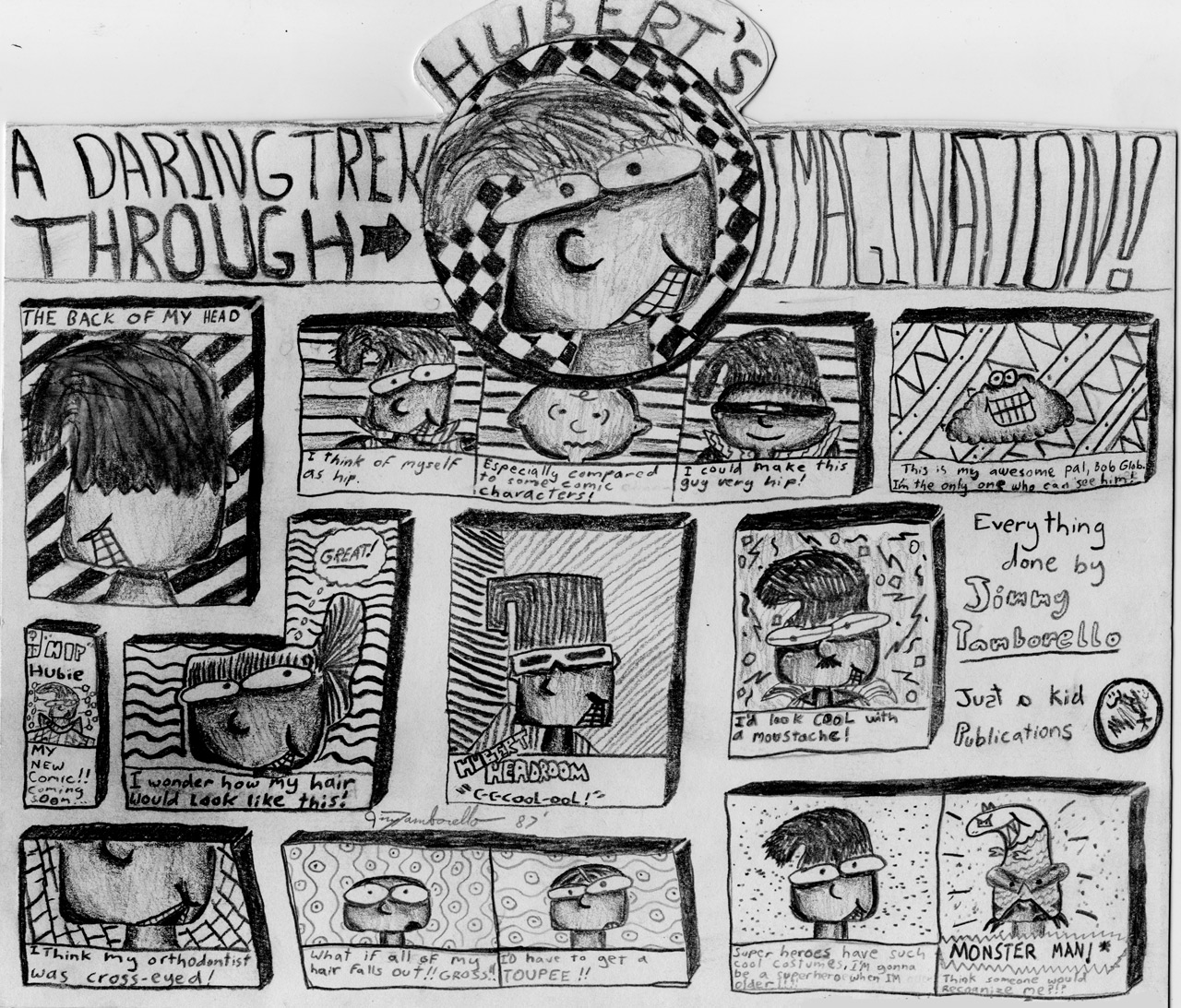
The Tamborello brothers and their friends eventually appropriated the place, which became their practice space and recording studio. “Brian was the drummer, and you always practice at the drummer’s house,” laughed Papa Tamborello, who admits that maybe back in those seminal days, he wasn’t totally in tune with his sons. “I’m hardcore jazz, and they were more the music of their generation.”
Joyce Tamborello (née Menges) was naturally preferred by the comic-store staff, who only knew her as the kind and attractive mom of the clan. Shockingly, even the geekiest pop-culture guys never stumbled onto the fact (nor did she tell them) that she was a star of 1970s television and film who had known James Senior at Taft High School, but remet him at UCLA when he was studying dentistry. “Music brought us together,” said Joyce, who was an education major with a strong emphasis in the arts. James was there because he was forced to take classes outside his major. She thought his last name was Camarillo. He didn’t mind. Marriage, the military, and her sudden acting career followed shortly after. She began getting jobs in commercials and then landed a Disney film, dropped out of school temporarily, and later starred in a TV show, To Rome with Love, with John Forsythe. The cinematic aspect of his mother’s career provided Jimmy a major epiphany. “My mother was a gnome in The Gnome-Mobile, and that inspired me,” he said. “It wasn’t the acting — I knew you could be an actress — but because I got to see her fly on wires. I thought that was the best part of being creative; you could live in your own world, and you could fly.”
The family moved to Santa Barbara when James finished his residency and a short stint in the Air Force, and he established himself as a dental surgeon. Eventually, the kids came, Andromeda Comics closed, and Jimmy and Brian Tamborello discovered music.
“Whatever it is I like, I end up doing,” explained Jimmy, whose first love, it turns out, was the movies. There are Betamax tapes somewhere in the Tamborello family home that archive the brothers’ auteurial exercises, short films obviously indebted to the Indiana Jones franchise. “I made movies, and I made comic books, and then suddenly it was music,” Jimmy recalled. Because he already had a studio, it was even better. “I dropped all the moviemaking, mostly because movies were too overwhelming. When I became obsessed with having a band, I had access to the things I needed to make music.”
Jimmy had good teachers in junior high and at San Marcos (Ditte Wolff, among them) but found more useful influence outside academia. “The guys at Deep Groove Records were really helpful in pointing us in new directions,” he said, remembering the Chapala Street headquarters known for its edgy industrial and electronic sounds. He tuned in regularly to fringe radio shows like Fear Heiple’s Fear of Music on KTYD and discovered even more foreign lands on KCSB, thanks to shows like Ghetto Radio in the early ’90s. Jimmy and his pals began playing in bands and then putting together ensembles (“raw noise,” he recalled) like The Chia Band, making tapes of their tasty thrashes and distributing them in area record stores. They convinced Heiple to play their jams on the radio, a transformative memory that still seems thrilling.
Typically modest, Tamborello claims he “tricked” writers at this paper, like Duncan Wright, who once helmed the Positively State Street column, to review their recordings. “The Dunk Machine [Wright’s nom de plume] must’ve thought we were like Sonic Youth,” Tamborello said, but he admits that Wright’s ardor eventually dimmed. Parry Gripp, who inherited the column under the pseudonym “Andrew Broomhead,” championed them, too.
Tamborello graduated from San Marcos and went off to Loyola Marymount because it offered both liberal arts and a recording arts program. “The school was fine,” said Tamborello, spare with disparaging words, “but the radio station was what I loved about it. KXLU, because it was a Catholic college, was a little restricted in what we could play, but it was a great education for me,” said Tamborello, who had a show that hosted live bands and scored him loads of free tickets to great concerts. On the music-making side of things, he created more sophisticated rock sounds in bands like Strictly Ballroom, Skillet, and Figurine, and his club/radio connections helped get him L.A. gigs. He was inspired by the precursors of indie rock, like Pavement and The Magnetic Fields. Meanwhile, he was composing and recording himself by himself. “I had a MIDI controller, synthesizers, and a drum machine that I used, but the computer was my main station,” he said.
Even back then, the songs were moving, full of big machine psychedelia and lyrical melodies. In 2004, he released Life Is Full of Possibilities, and the critics went crazy; it was something that people seemed to be lined up to hear, though they didn’t know it at the time. It also directly led to forming The Postal Service, which won him popular cultural status. It must be more like composing than songwriting, I suggested one day. “I never had much training in music, much education,” said Tamborello, ever the humble one. “I just write what sounds good to me. It’s almost instinctual. It’s not intellectual. There isn’t any music theory involved.”
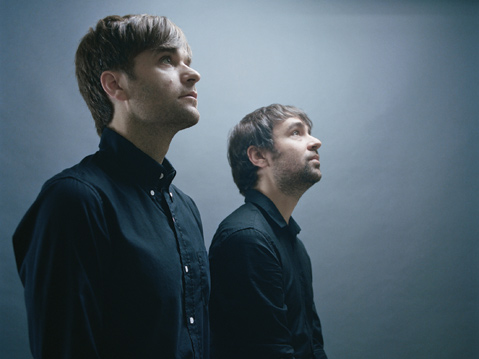
Giving Voice to Noise
“I call it techno pop,” said Jimmy, who draws a sharper line than most between his own brand of computer-based music and anything art, industrial, or avant-garde. “If anything, I wish I was more cool, since the bands I like are a lot harder edged than me.” Since the 1990s, Jimmy preferred artists with darker muses, like Ministry and Skinny Puppy, though what he did with the synth and the MIDI and the drum machine wasn’t exactly bubble gum either. Pitchfork reviewer Matt LeMay reveled in the tensions that Jimmy built into The Postal Service’s hit song “The District Sleeps Alone Tonight,” praising the contrast between “hiss-laden sample strings and ethereal background vocals.” He brought emotion to the console.
Most people don’t know that electronic music dates back to the 1870s, though it took nearly 100 years for it to filter down from art to pop forms, appearing first as a novelty classical music act (remember Switched-On Bach?) and then as musical augmentation for bands like The Beach Boys and Pink Floyd, thanks to instruments like the theremin, mellotron, and Moog synthesizer. By the 1980s, bands like Kraftwerk and Tangerine Dream were attempting to synthesize the human voice with noisy computer-assisted oscillators.
Tamborello brought it all home for his generation, matching emo indie rockers like Chris Gunst of Beachwood Sparks with musical ideas heretofore confined to intelligent dance music (IDM) bands like Squarepusher. He was changing the game, according to many music critics, not to mention paving the way for future champions like Animal Collective. “I don’t know that I was doing something that was so unique, or that I was a pioneer,” said Tamborello. “I think people who look back like that at what I was doing aren’t really taking into account what a lot of other people were doing then. I was feeding off ideas, too. But I had a great feeling when I was making [Life Is Full]. I felt like I was making an album that I wanted to hear, that I couldn’t find anywhere else. I haven’t really had that same feeling since.”
Life paved the way to The Postal Service, a band that began in Jimmy’s living room. “I had a roommate who was touring with Death Cab, and I liked them, so I asked my roommate if he would ask Ben if he wanted to sing on a song I wrote.” Later, Gibbard heard labelmate Jenny Lewis singing and asked her to climb onboard. The collaboration took place via mail: Jimmy wrote the music and sent a disk to Ben, who put down vocals and sometimes rearranged. It wasn’t, as some have suggested, a conceptual art piece based on postage stamps. “We did it by mail because back then the Internet was too slow. It was all dial-up. If we had done the album later, we would have had to call ourselves something different,” he laughed.
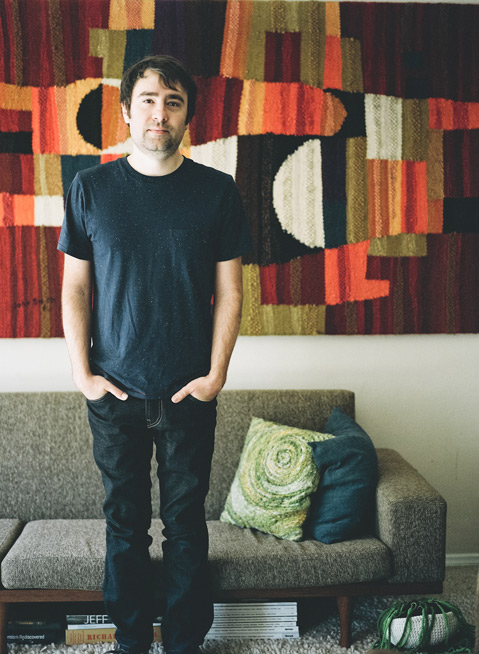
Tamborello is nervously happy about the reunion tour, but he’s eagerly happy about what happens next. “I have a kind of blank slate coming up, and I don’t know what I want to do.” He rejects the higher callings like composing for films, though he did score a 10-minute movie about nutria, or “giant rodents,” as he puts it. “But the idea of writing like that makes me nervous — too many deadlines.”
He’s been working in an increasingly technological fashion with modular boutique-created synthesizers. “I don’t really like to read the manuals, so it’s been a drawn-out process, but it’s been exciting.” He even managed to jettison the keyboard. “I’m learning to create a sound from scratch, from a sine wave,” he said. But he could move in the other direction. “I have trouble getting away from cuteness in my music. When I try to write darker, it’s just not authentic.” Later on, he said, “I think I would just like to write some pop songs.”
Nobody’s stopping him, least of all his family. Tamborello comes to town about once a month to visit his folks and likes to go to places he went when he lived here full-time, like the Game Seeker and Elsie’s. His parents are proud and excited by what has happened.
“I always look back and wonder what I should have done in my life, but I think we did alright as parents,” said Joyce. “The boys knew they were loved and that we were supportive of what they did, so I always feel good about that.”
James Tamborello, who’s more or less retired now, is an avid fan, though he ruefully admits to missing the band’s recent gig in San Luis Obispo. (His own band was playing a once-a-year jazz gig at the La Cumbre Country Club the same night.) “I’m just glad he never listened to me,” said James. “When he was out of college and doing some projects and I told him he ought to sign with a label, get established, he rebuffed my advice. He wanted to go his own way. Turned out he was right and I was a couple of generations behind the times,” he said. “At the same time, I’m offended I wasn’t invited out on tour.”
4•1•1
The Postal Service plays the Santa Barbara Bowl on Saturday, July 20, at 7 p.m. with Big Freedia and Baths. Call 962-7411 or visit sbbowl.com for tickets and info.



